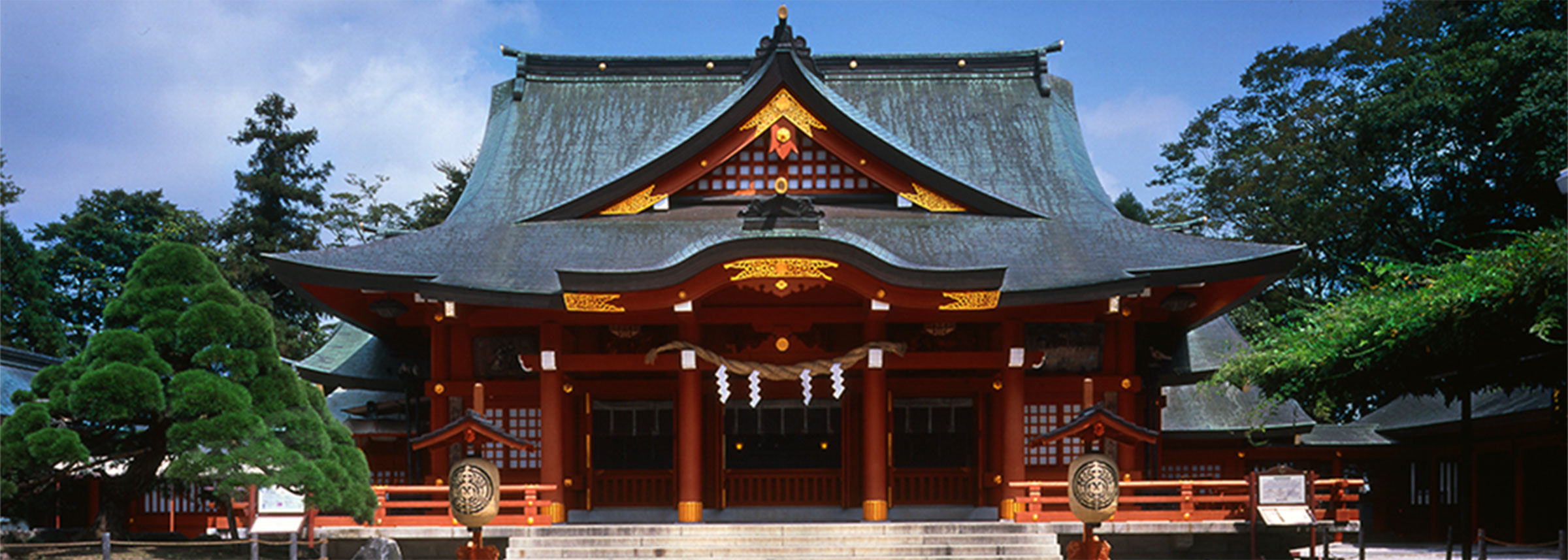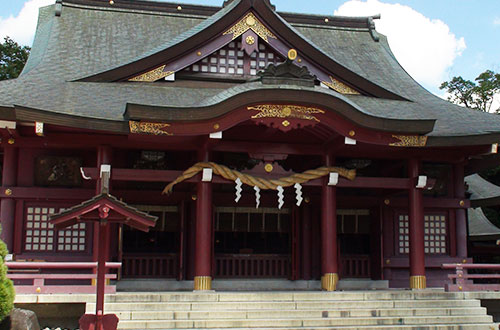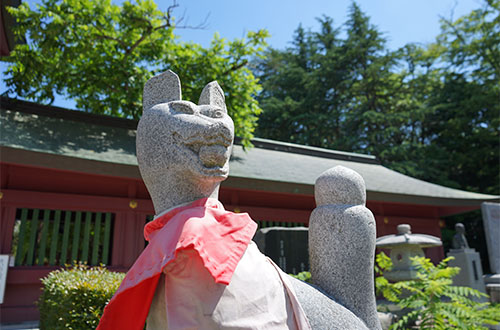


This jinja is known as one of the three largest Inari shrines in Japan, and its deity was awarded the Senior First Rank, the highest court rank granted to shrines. During the feudal Tokugawa period, the shrine was revered highly as the designated place of worship for the here ditary lords of the Kasama Domain, and since that time, it came to be known popularly by the familiar title of Kurumi ga shita Inari ("the Inari under the walnut trees") or Monzaburo Inari (The Monzaburo Inari).

The great kami known as Inari was originally known by the name Ukanomitama no kami ; according to the oldest collection of Japanese mythology, the Kojiki ("Records of Ancient Matters"), Ukanomitama no kami was the child of Susano no okami and Kamuoichihime no kami. The "Uka" in the name means foodstuffs, indicating the "mysterious spirit dwelling in the grain." In short, Ukanomitama no kami is known as the kami with jurisdiction over the five grains and foodstuffs, the life-root kami having mastery over the sources of life itself.
Devoted to this same Ukanomitama no kami, the Kasama Inari Shrine is one of the three largest Inari shrines in Japan, having been awarded the ancient court rank of Senior First Grade. According to the shrine's legendary history, Kasama Inari was founded in 651 during the reign of Japan's 36th emperor, Kotoku, thus boasting of a history extending over some thirteen centuries. Particularly during the Tokugawa period, the Kasama Inari Shrine received the devoted patronage of the feudal lord of the Kasama Domain, and spread its influence not only through the Kanto region but throughout all of Japan.
At present, the shrine is visited by more than 3.5 million pilgrims each year.
The kami enshrined at Inari shrines is named Ukanomitama no Kami, a deity which presides over the root of life. Known as a deity of fertility and reproduction, rebirth, growth and productivity, and protection against fire, the deity is worshiped for its great and boundless virtue.
We are given life by the workings of this kami's spirit, which has an intimate relation to all aspects of our life as human beings.
The motif of the fox or horse which is frequently associated with this kami is due to the role of these animals as messengers of the deity, similar to the hawk found at Hachiman shrines and the "Korean lions" (komainu) at many local ujigami (local tutelary deity) shrines.
In the medieval period, many such animals were believed to to act as intercessors, carrying the manifold entreaties of humans to their masters in the divine world, and this custom continues at present.
In ancient Shinto, the "mountain kami" was believed to descend from its winter residence in the mountain to become the "paddy field kami" (ta no kami) in the spring, residing there during the subsequent agricultural season. Following the fall harvest, the deity would return once again to its winter home in the mountains in its role as the "mountain kami."
In the same way, the fox makes its first appearance near human habitations about the time of new year's "first day of the horse," returning to its winter home in the mountains like the yama no kami after the fall harvest.
As a result, the adoption of the fox motif as the messenger for the Inari deity is likely based on the symbolic relationship between the "mountain kami - field kami" belief of ancient Shinto, and the characteristic activity of the fox, which makes its appearance in human habitations around the same time.

Shrine Offices of Kasama Inari Jinja
1 Kasama, Kasama-shi, Ibaraki-ken
309-1611 JAPAN
TEL/0296-73-0001
FAX/0296-73-0002